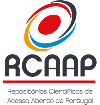“A formosa maquina do Ceo e da terra”: the 1719 Corpus Domini procession and the role of the architects Filippo Juvarra and João Frederico Ludovice
DOI:
https://doi.org/10.48751/CAM-2014-1305Keywords:
Corpus Domini, Juvarra, Ludovice, King John VAbstract
In 8th June, 1719, Lisbon city was transformed in a holy space, where all Portuguese society, by hierarchic order, venerated the holy Eucharist during the Corpus Domini procession. Traditionally this historical fact was interpreted as evidence of king John V’s devotion, but it was much more. The new aesthetic organization of Corpus Domini’s procession represented, through the arts, the power of portuguese monarchy towards the Holy See and the other european royal crowns and it reflected the dynamic historical context of second and third decades of Eighteen century. The ephemeral architectures built for occasion have been traditionally attributed to the German architect João Frederico Ludovice. The essay problematizes this attribution, focusing on the Filippo Juvarra’s role, the italian architect who has been invited by the portuguese king to project the new royal palace, patriarchal basilica and palace and he was active in Lisbon between January and July 1719.
Downloads
Downloads
Published
How to Cite
Issue
Section
License
Copyright (c) 2014 Giuseppina Raggi

This work is licensed under a Creative Commons Attribution-NonCommercial 4.0 International License.
The authors retain copyright and grant the journal the right of first publication, with the work simultaneously licensed under the Creative Commons Attribution License CC BY-NC 4.0 which allows sharing and adapting the text as long as its authorship is correctly attribbuted with recognition of the initial publication in this journal.










